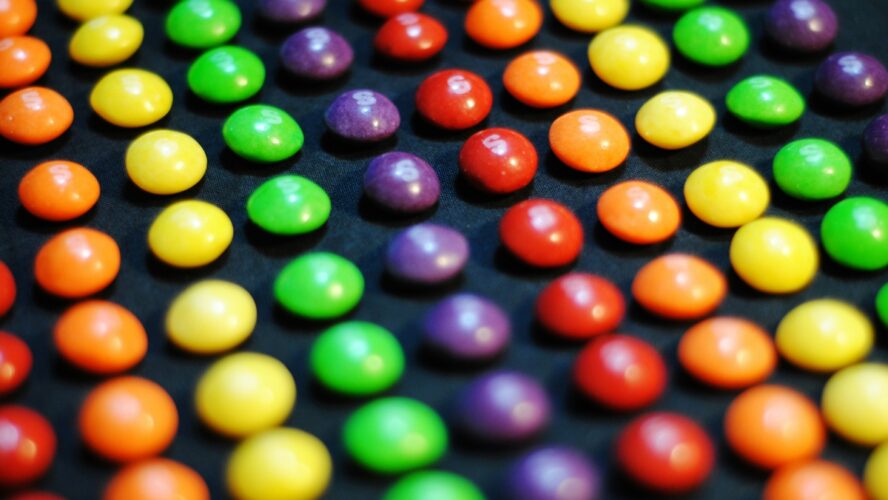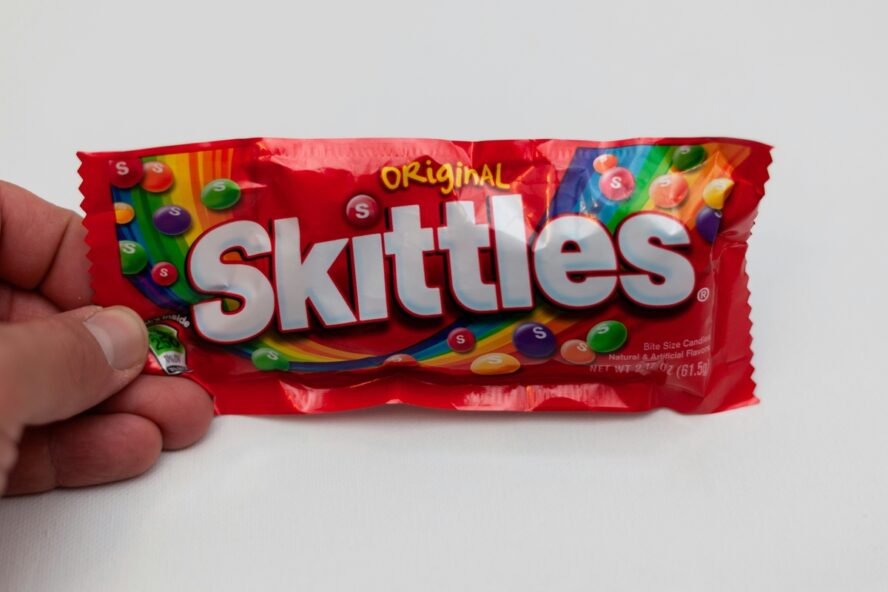
You can officially taste the rainbow without the risk of cancer. In late May, after over a decade of pressure from health and safety groups, Bloomberg reported that Mars has finally removed titanium dioxide from Skittles formulations in the U.S.1.
“Our commitment to quality is what has enabled Mars to be enjoyed by consumers for over a century, and nothing is more important than the safety of our products,” a spokesperson said in a statement.
Titanium dioxide is used in a variety of products, including paint and sunscreen. But what is titanium dioxide used for in food? Its primary purpose is to give items a shinier, more vibrant, or more opaque allure. While Mars (which acquired Skittles in 2008) announced that it would stop using “all artificial colors” in its products in 2016, titanium dioxide coloring persisted until late 2024, when Mars quietly removed it from the candy’s formulation.
What Is Titanium Dioxide and What Are the Health Risks?
The worries over titanium dioxide in food are linked to its purported genotoxicity. The research solidifies these worries, linking the additive to cellular damage and increased risk of cancer.

A 2016 study in Mini-Reviews in Medicinal Chemistry found that the compound could contribute to oxidative stress and inflammation, with the resulting cell damage having potential carcinogenic side effects2. A 2014 study in Biomedicine & Pharmacotherapy showed that titanium oxide particles could induce tumors in human gastric cells3.
As if that weren’t enough, a 2018 research review in the Journal of Nanobiotechnology pointed to a risk of contamination with heavy metals such as lead, arsenic, or mercury4. So is titanium dioxide safe? Well, it certainly seems like it’s not worth the risk just for more brightly colored Skittles.
Banning Titanium Dioxide
The Make America Healthy Again report released on May 22 of this year called out titanium dioxide as an additive of concern, citing its potential links to cellular and DNA damage5. This led to the recent ban of titanium dioxide in school lunches in Arizona.
This ban is already in place in other countries — the European Union banned titanium oxide in food in 2022, when the European Food Safety Authority wrote that “an acceptable daily intake [of titanium dioxide] cannot be established” due to concerns regarding potential genotoxicity6.
But Mars and other companies have disputed these claims — and so, for that matter, have U.S. regulators, who claim that titanium dioxide is safe within approved limits. While titanium oxide in Skittles is no longer allowed, foods with titanium dioxide still include Wegman’s Macaroni and Cheese, certain Campbell’s soups, and some Lunchables items.

Other Mars products, like M&Ms, still contain synthetic dyes like Red 40, which has been linked to potential inflammatory and carcinogenic side effects, and Yellow 5 (tartrazine), which has been linked to mood problems in children.
State-Level Efforts Make a Difference
In 2023, the Environmental Working Group and Center for Food Safety filed a petition to ask regulators at the FDA to ban titanium oxide from food, but as of March 2024, it was still under review. Also in 2023, an effort in California to ban the ingredient was defeated — but not for nothing. According to Melanie Benesh, vice president of government affairs at the EWG, Mars’ recent formula change is undoubtedly thanks to state-level efforts like this one.
“The FDA has said a lot of things about food additives but we have not seen them take any enforceable actions yet,” she told the BBC7. “What has unquestionably made a difference is all of the action at the state level.”
Sources:
- https://www.bloomberg.com/news/articles/2025-05-27/skittles-removes-controversial-additive-targeted-by-rfk-jr?embedded-checkout=true
- https://pubmed.ncbi.nlm.nih.gov/26996620/
- https://pubmed.ncbi.nlm.nih.gov/24051123/
- https://pubmed.ncbi.nlm.nih.gov/29859103/
- https://www.whitehouse.gov/wp-content/uploads/2025/05/WH-The-MAHA-Report-Assessment.pdf
- https://www.efsa.europa.eu/en/news/titanium-dioxide-e171-no-longer-considered-safe-when-used-food-additive
- https://www.bbc.com/news/articles/c14kp3rdreeo

